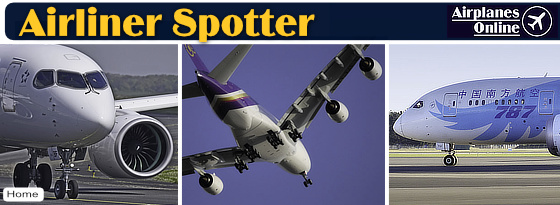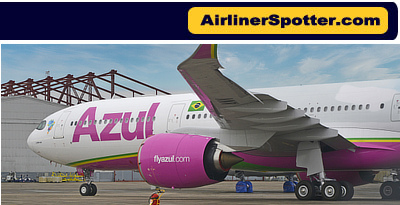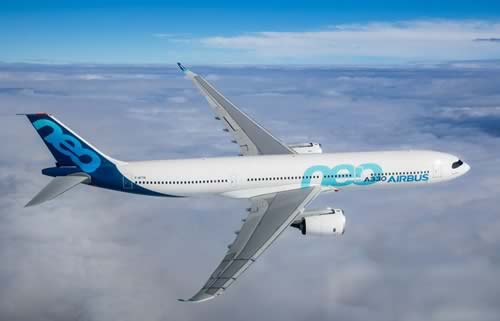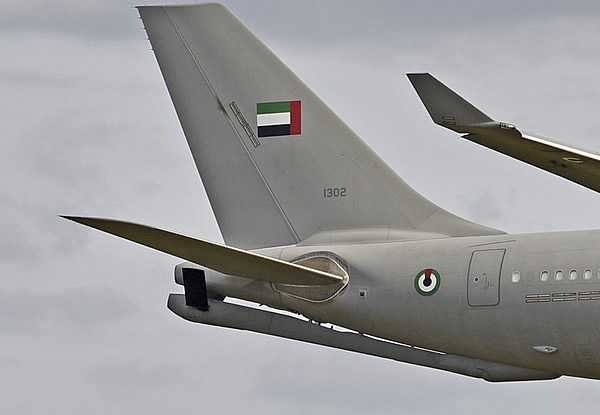Airbus A330 Spotting Guide
The Airbus A330 is a wide-body, twin-aisle derivative of Airbus's first airliner, the Airbus A300. The two-engine A330 was developed in parallel with the four-engine Airbus A340, and the two airliners share a number of common airframe, design, and operational components.
Airbus A330 Variants
The A330-300, the first variant of the A300, first flew in November of 1992 and entered passenger service with Air Inter in January of 1994. The overall length of the A330-300 is 208' 10".
Airbus later developed the shorter A330-200 variant, ten fuselage frames shorter than the -300, in 1998. The length of the A330-200 is 193', the aircraft has a taller tail than the -300, and measures 57' in height. The A330 Multi Role Tanker Transport (MRTT) is an aerial refueling tanker aircraft based on the Airbus A330-200. The A330 freighter is also based on the -200.
Recent models include the A330-800 and A300-900, both in the Airbus "NEO (New Engine Option) family".
Since its launch, the A330 has allowed Airbus to expand market share in wide-body airliners. Competing twinjets include the Boeing 767 and Boeing 777, as well as the newer Boeing 787.
| A330 Model | Overall Length |
Overall Height |
Typical Seating |
Range |
| A330-200 | 193' 0" | 57' 0" | 247 | 7,250nm |
| A330-300 | 208' 10" | 55' 3" | 277 | 6,350nm |
| A330-800neo | 193' 0" | 57' 0" | 257 | 7,500nm |
| A330-900neo | 208' 10" | 55' 3" | 287 | 6,550nm |
Airbus A330 Orders and Deliveries
Total Airbus A330 orders and deliveries are shown in the table below (through October, 2025). View current Orders/Deliveries from Airbus.
| Airbus A330 Model | Orders | Deliveries |
| A330-200 (ceo) | 665 | 659 |
| A330-200F (ceo) | 38 | 38 |
| A330-300 (ceo) | 776 | 776 |
| A330-800 (neo) | 12 | 7 |
| A330-900 (neo) | 452 | 166 |
| TOTAL | 1,943 | 1,646 |
Airbus A330 Spotting Tips
| Airbus A330 spotter's guide: notched windshield window, two engines (one under each wing), one passenger deck the length of the fuselage, main landing gear fall to the rear, a "bulged' area between the wings, winglets, and a straight fuselage under the tail structure. |
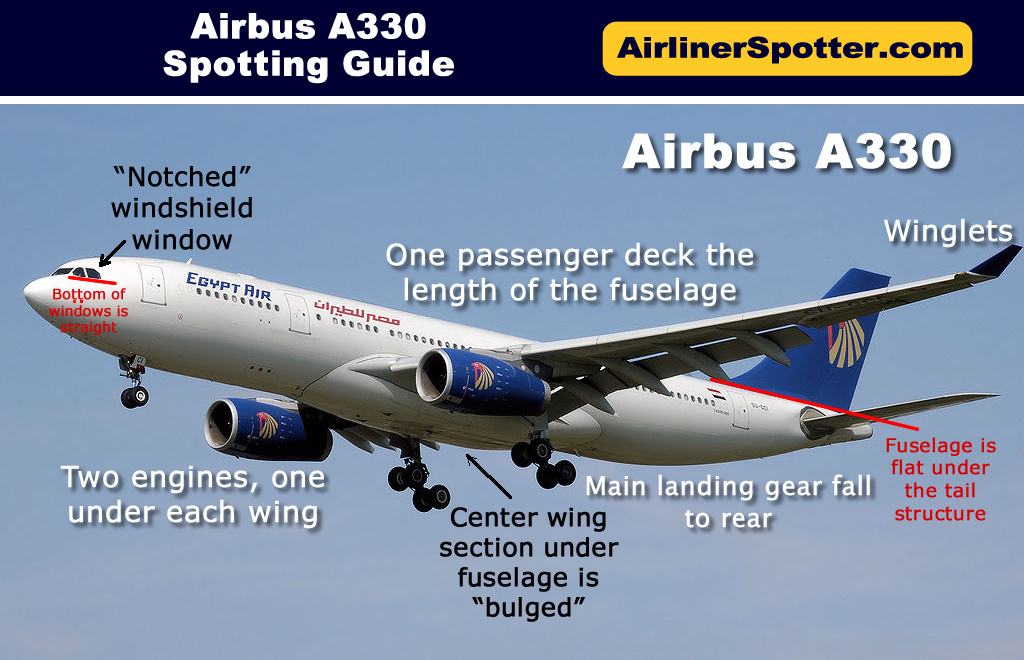 |
| Comparison of the Airbus A330-200 (top) and A330-300 (bottom). The difference in the number of windows between the two forward fuselage doors can distinguish the two models. Typically, the -200 has 12 windows between the two doors, while the -300 has between 17 windows; window configuration does vary. |
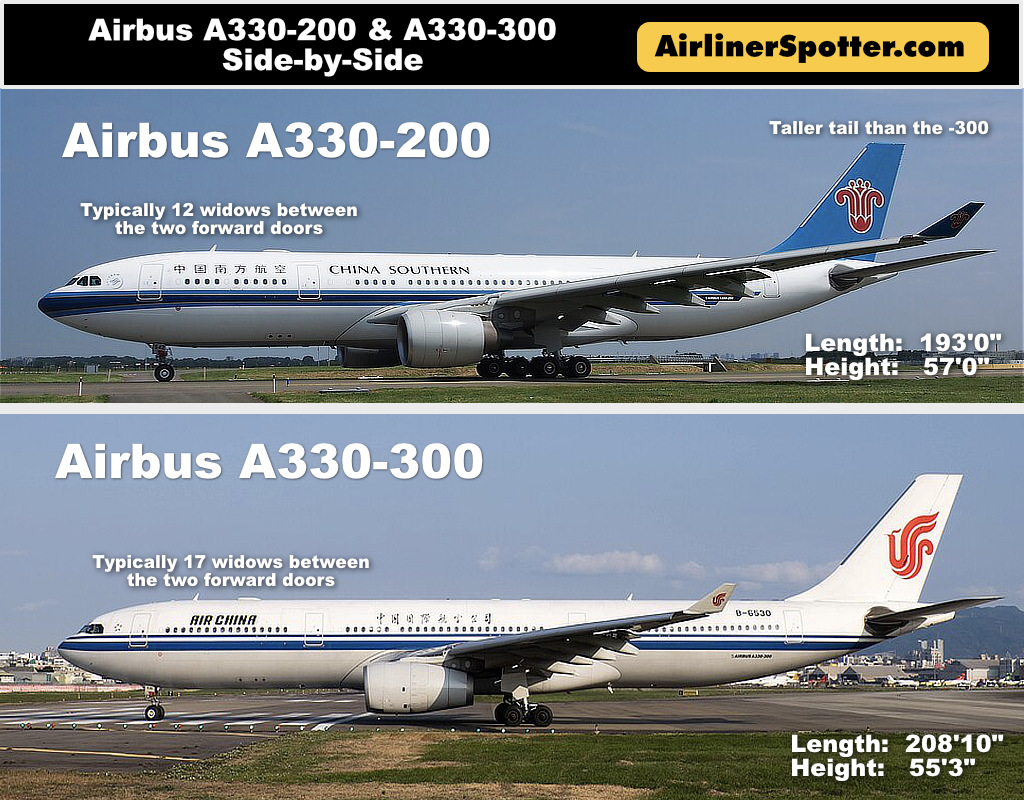 |
Airbus A330-200FThe freighter version of the A330-200 features a large nose undercarriage "blister" to facilitate a level deck during cargo loading and unloading. |
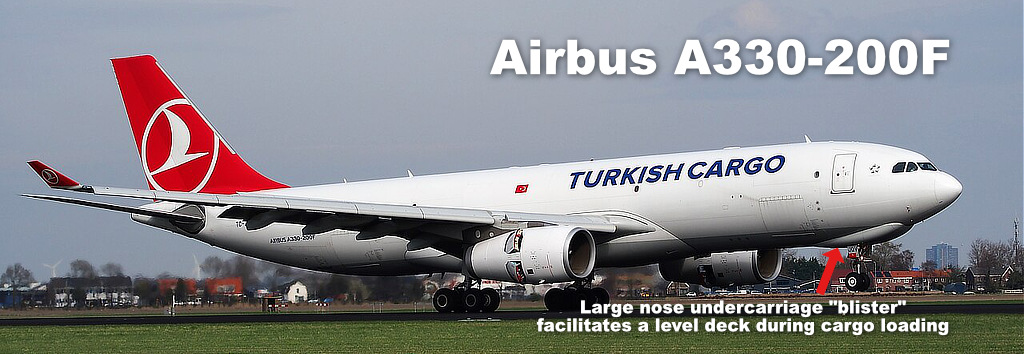 |
Airbus A330neo
The new A330neo family of jetliners incorporates the latest-generation Rolls-Royce Trent 7000 engines, along with multiple aerodynamic improvements. The first A330neo prototype, a A330-900neo, first flew on October 19, 2017 from Toulouse. A second A330-900neo and a A330-800neo also participated in flight testing.
|
A330-800neo
The A330-800neo retains the same overall length as the A330-200, i.e, 193'.
With a range of 7,500 nautical miles, the A330-800neo typically will seat 257 passengers in three classes of service, while offering capacity for up to 406 travellers in a high-density configuration.
A330-900neo
The A330-900neo retains the same overall length as the A330-300, i.e, 208' 10".
The extended-fuselage member of Airbus’ A330neo product line, the A330-900neo, can accommodate 287 seats in a typical three-class layout or up to 440 for high-density configurations. It incorporates the latest-generation Rolls-Royce Trent 7000 engines, along with aerodynamic improvements including new composite Sharklet wingtip devices, as well as increased lift and reduced drag.
| Shown below is a spotting guide for the Airbus A330neo |
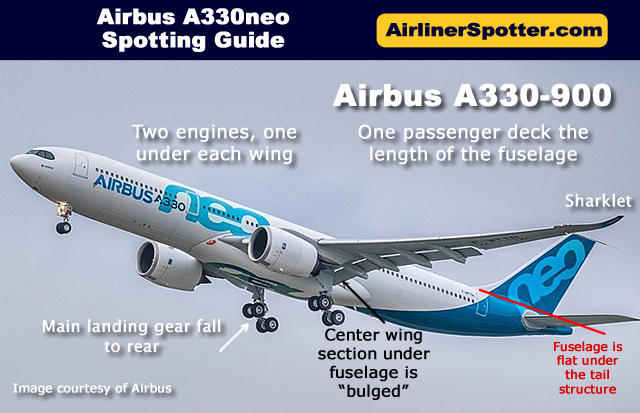 |
Airbus A330-900neo (Photo by DELEHELLE Eric) |
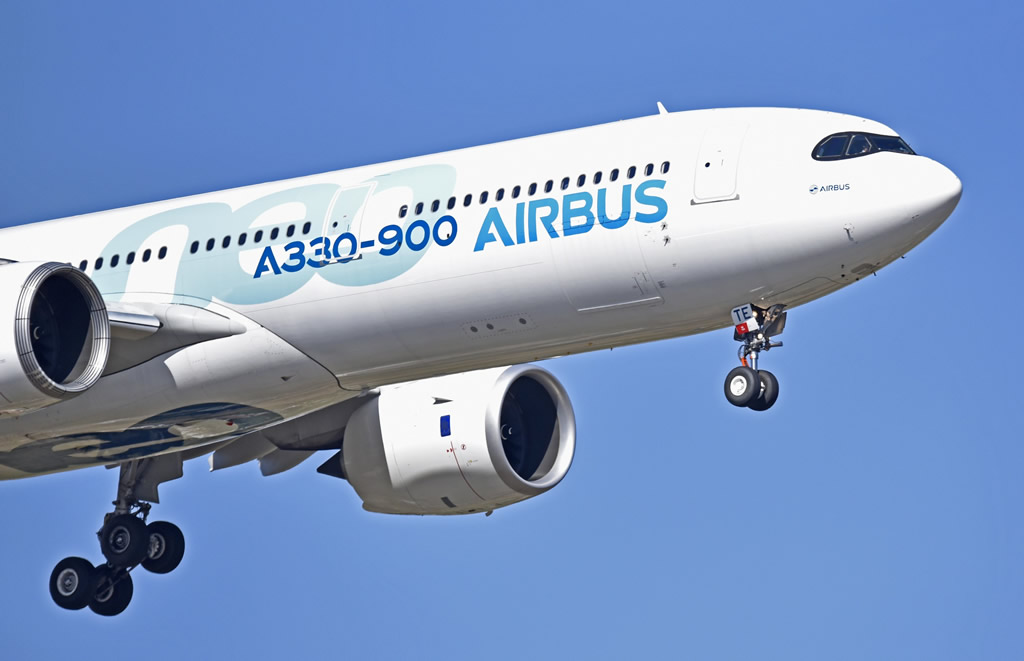 |
Lion Air Airbus A330-941neo, msn 1984 (Photo by DELEHELLE Eric) |
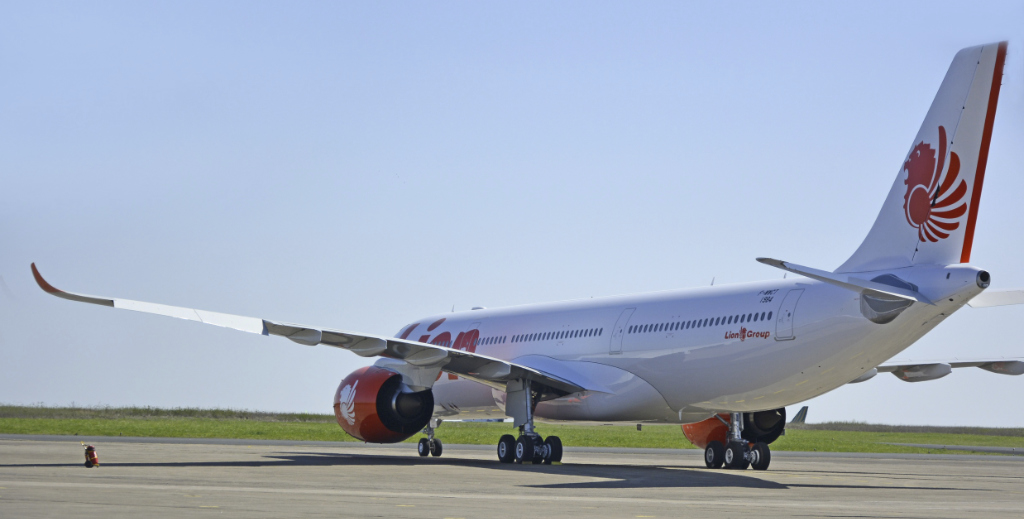 |
AZUL Linhas Aereas Brasileiras Airbus A330-941neo, F-WWYO, msn 1952 (Photo by DELEHELLE Eric) |
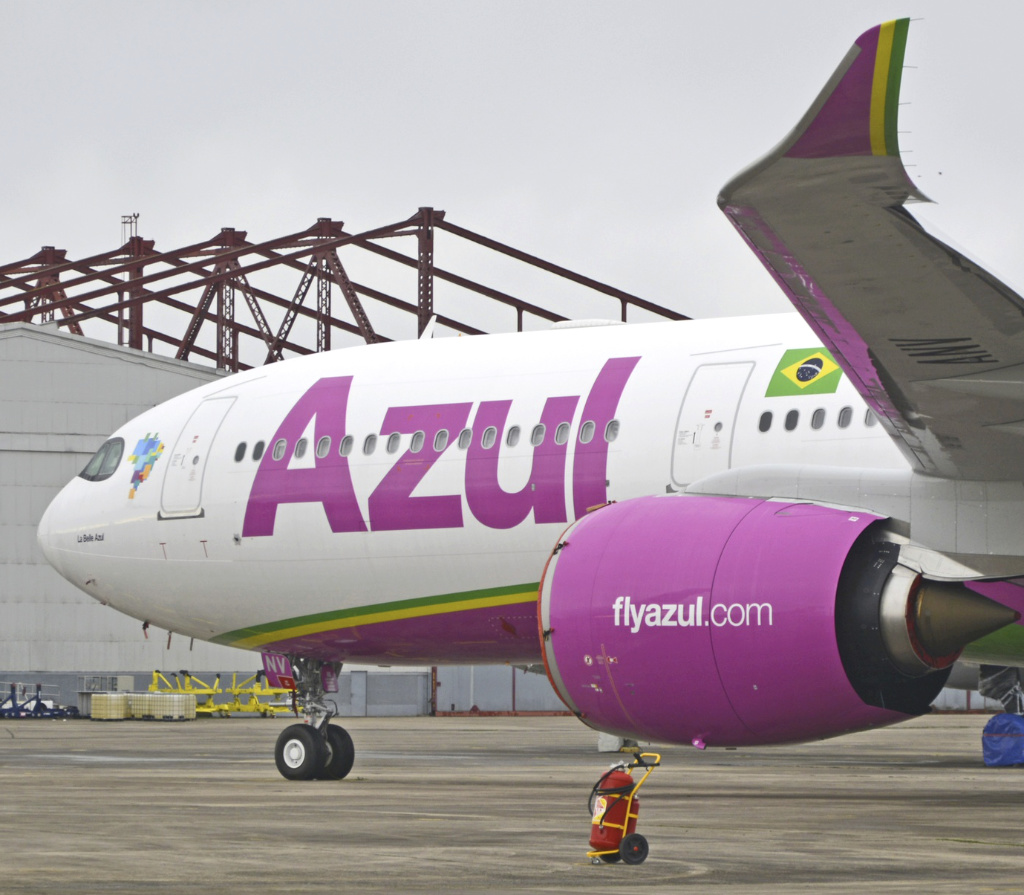 |
Side-by-Side Comparison of the Airbus A330 to Other Airliners
| The chart below shows how similar the Airbus A300 (top) and the A330 (bottom) are in overall appearance. One significant difference is between the wings and under the fuselage. The A300 is flat under the fuselage, whereas the A330 features a bulge in that area. |
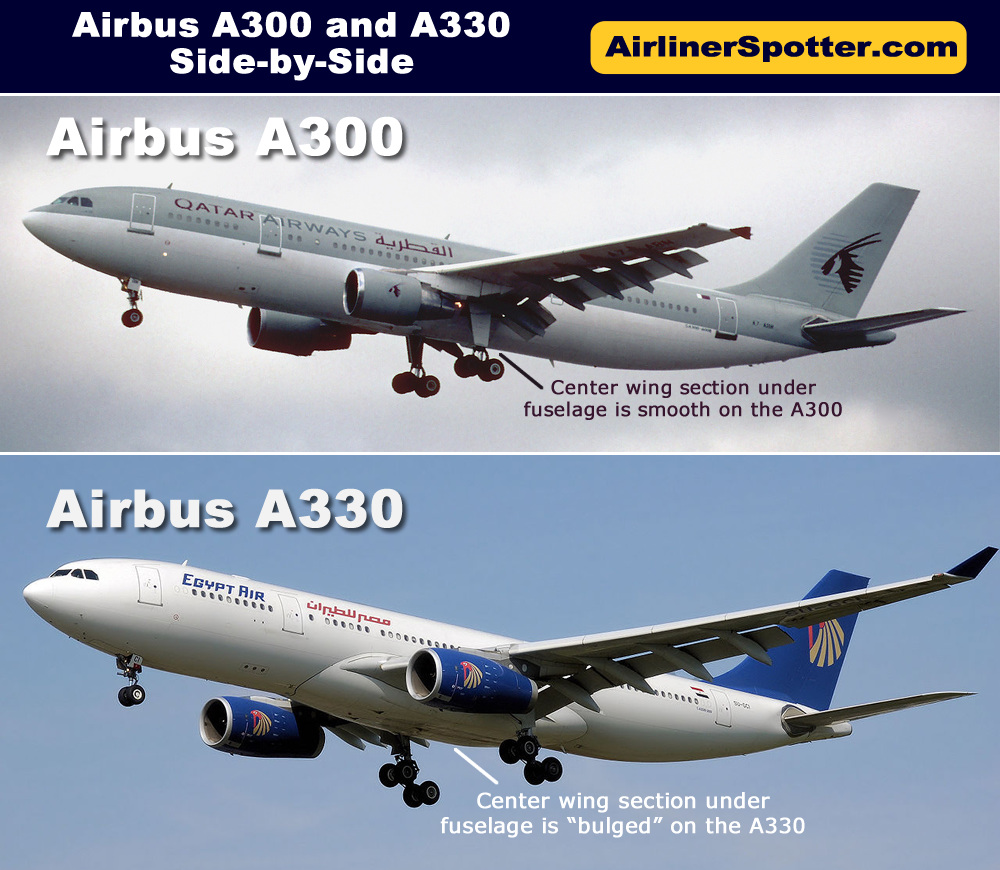 |
| Shown below is a side-by-side comparison of the Airbus A330 (top) and A340 (bottom) |
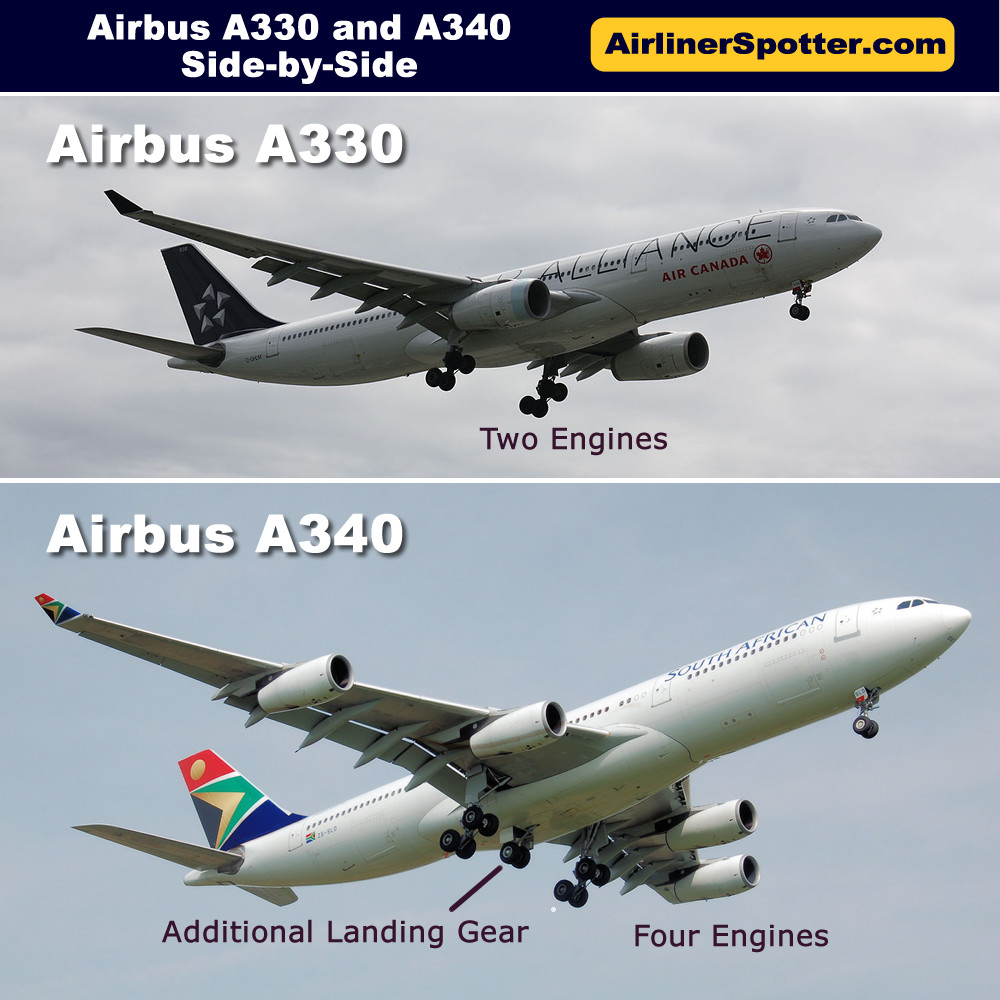 |
| Airbus A330 (bottom) and Boeing 767 (top) main landing gear differences |
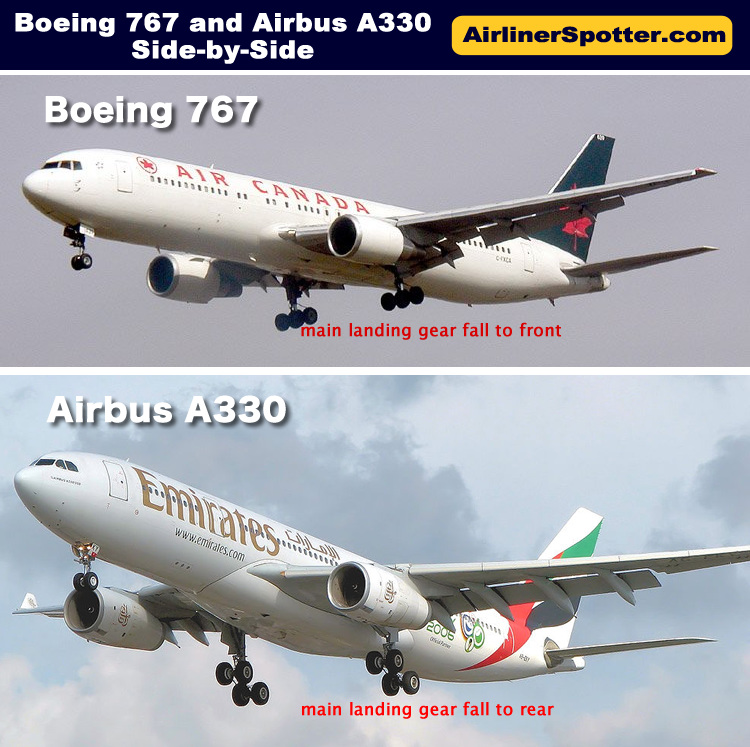 |
Airbus A330-200 Photographs
Airbus A330-223, F-RARF, of the French Air Force, for the Presidency of the French Republic (Photos by DELEHELLE Eric) |
 |
 |
 |
A330-200 F-HLVL of LEVEL |
A330-200 of Tibet Airways, msn 1859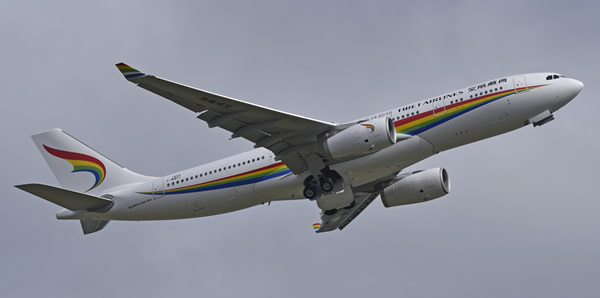 |
Air Caraïbes A330-200, F-HHUB (Photo by DELEHELLE Eric) |
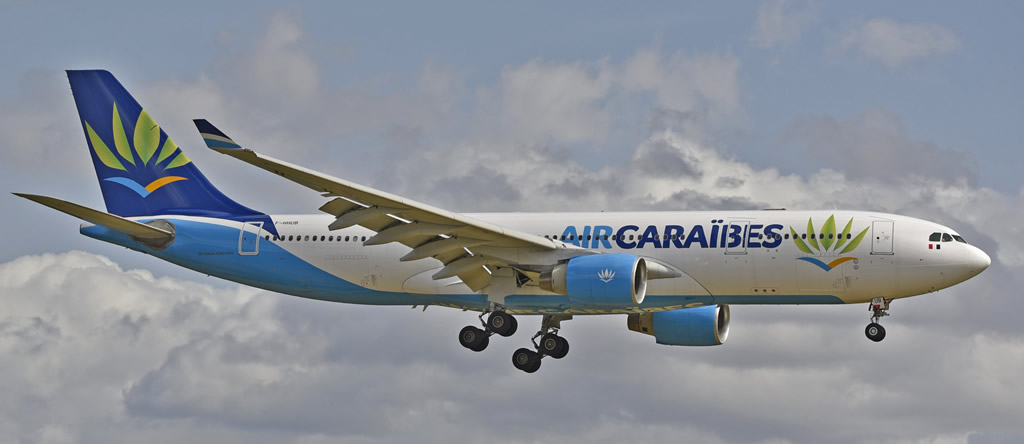 |
| Iran Air A330-200 F-WHUR - ex Avianca msn 1586, EP-IJB - February, 2017 (Photos by DELEHELLE Eric) | |
 |
 |
A330-200 CS-TQW - Clean Seas - Turn the Tide on Plastic (Photo by DELEHELLE Eric) |
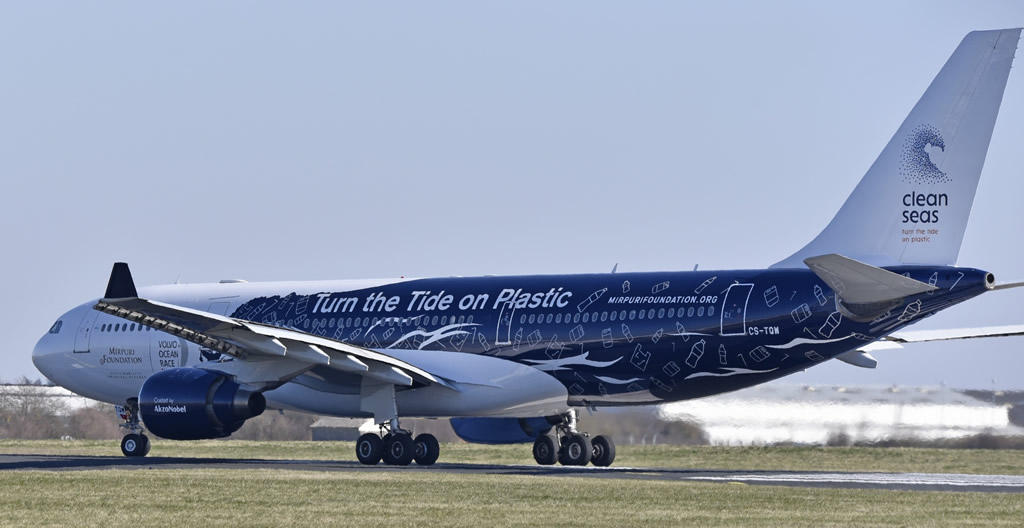 |
Airbus A330-300 Photographs
Airbus A330-300 of Cebu Pacific, msn 1789 (Photo by DELEHELLE Eric) |
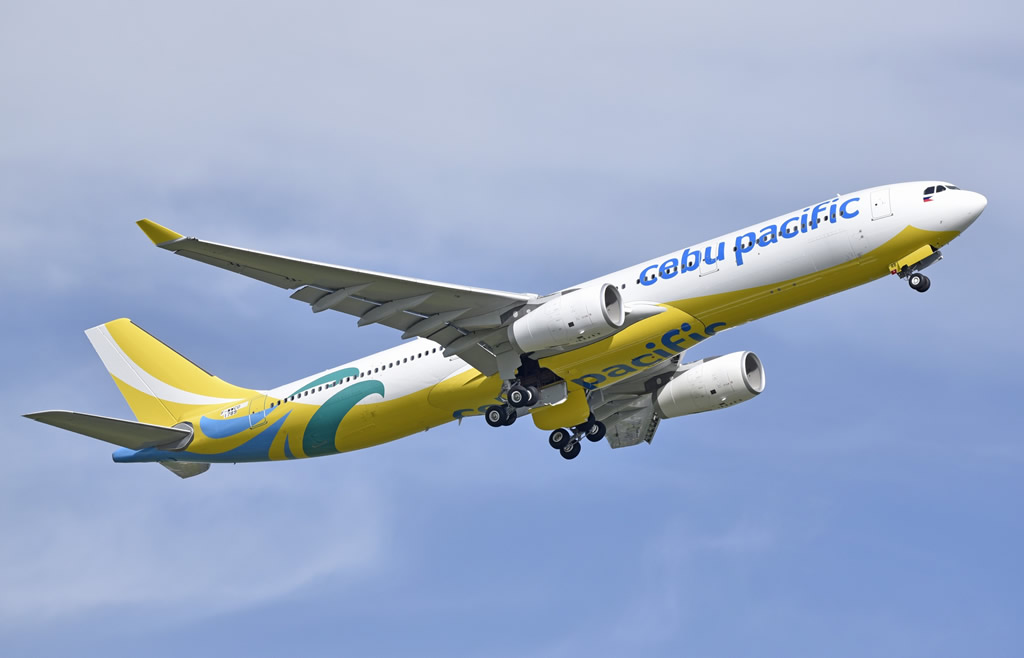 |
iFly Airlines Airbus A330-300, EI-GWF (Photo by DELEHELLE Eric) |
 |
A330-300 of Thaï Lion, msn 1828 (Photo by DELEHELLE Eric) |
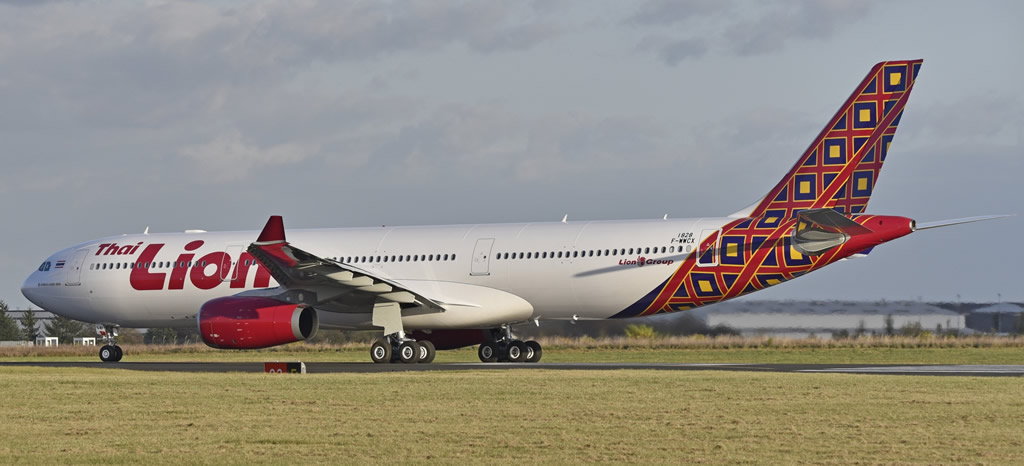 |
A330-300 Frenchbee, F-HPUJ |
Saudia A330-300, msn 1803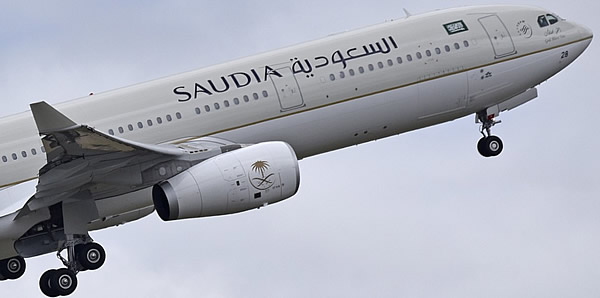 |
Hainan Airlines A330-300, msn 1855 (Photo by DELEHELLE Eric) |
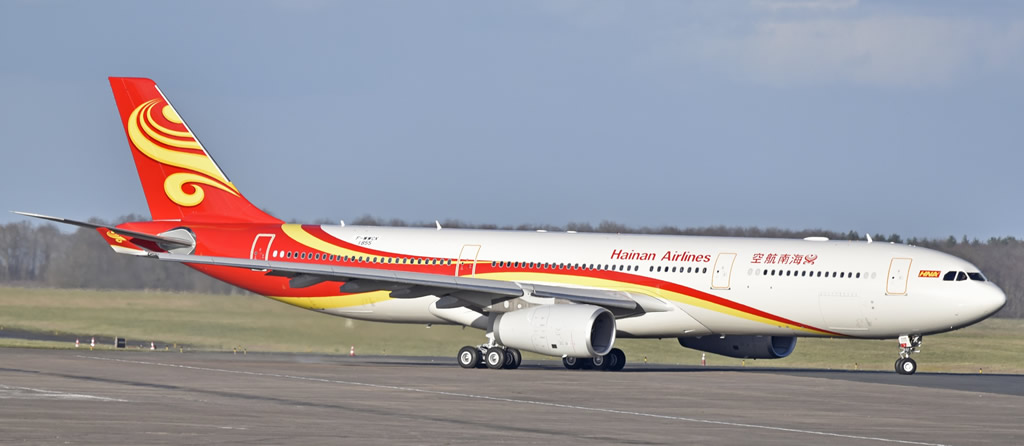 |
A330-300 of LuckyAir (Photo by DELEHELLE Eric) |
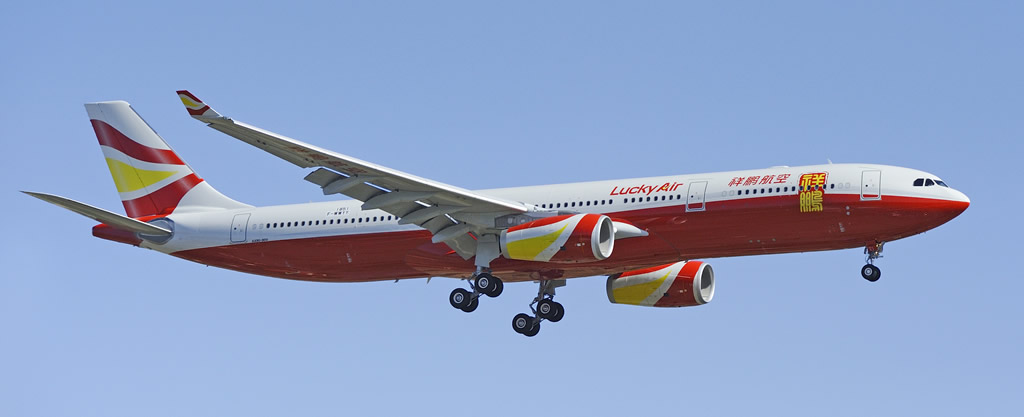 |
Malaysia Airlines A330-300 - One World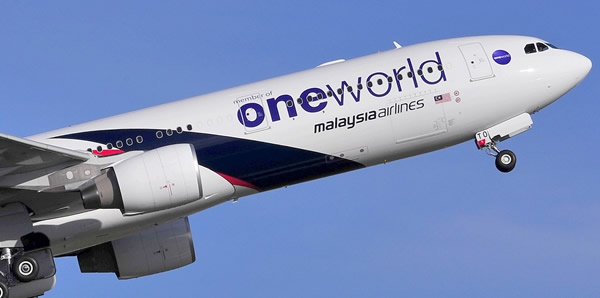 |
A330-300 of Air China, msn 1807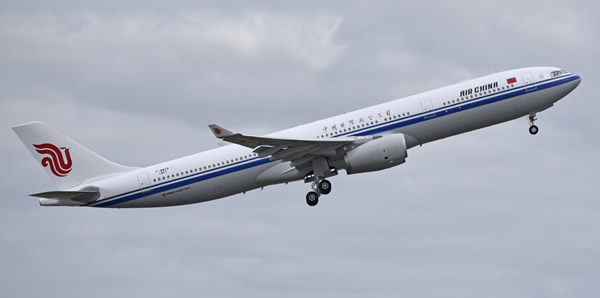 |
A330-300 Edelweiss Switzerland (Photo by DELEHELLE Eric) |
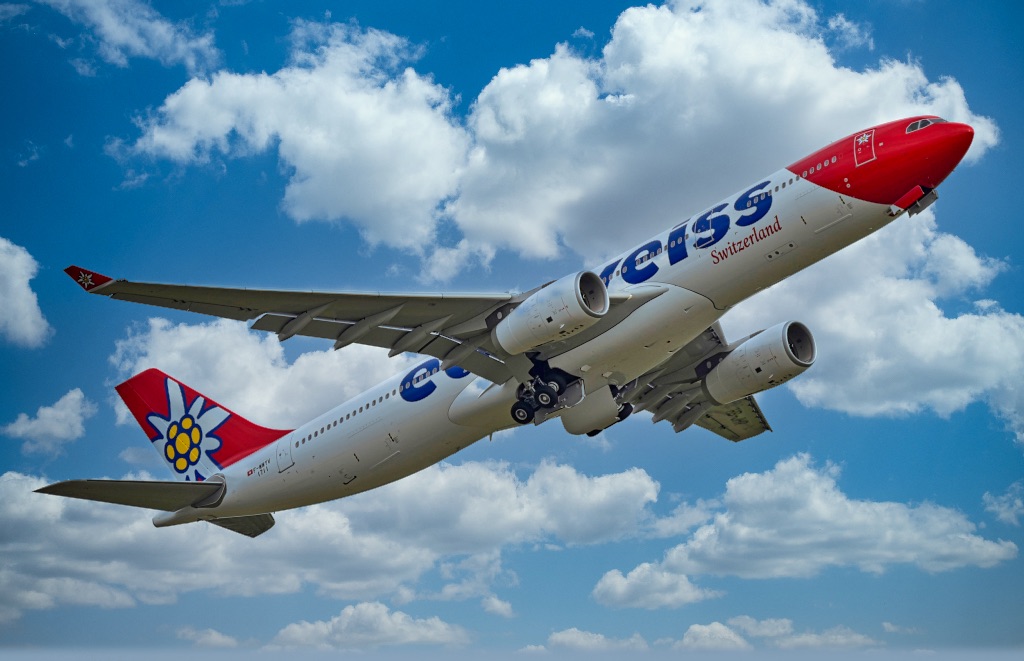 |
Aer Lingus A330-300, msn 1817 (Photo by DELEHELLE Eric) |
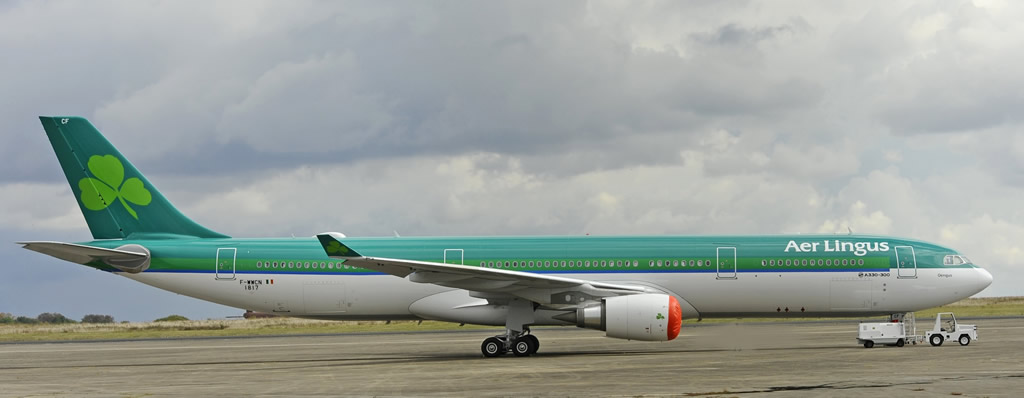 |
Airbus A330 Multi Role Tanker Transport (MRTT)
|
The Airbus A330 Multi Role Tanker Transport (MRTT) is an aerial refueling tanker aircraft based on the civilian Airbus A330-200.
The A330 MRTT cabin can be modified to carry up to 380 passengers in a single class configuration, allowing a complete range of configurations from maximized troop transport to complex customization suitable for VIP and guest missions.
The MRTT can also be configured to perform Medical Evacuation (Medevac) missions; up to 130 standard stretchers can be carried. The main deck cargo configuration allows carriage of standard commercial containers and pallets, military, ISO and NATO pallets.
Standard commercial A330-200s are delivered from Airbus Final Assembly Line in Toulouse, France to Airbus Military Conversion Centre in Getafe, Spain for fitting of refueling pods, booms and and military avionics.
A total of 12 nations have placed firm orders for approximately 60 aircraft, of which 42 had been delivered by the end of January 2020.
| French Air Force Airbus A330 MRTT Phénix, Registration F-UJCG (Photos by DELEHELLE Eric) |
|
 |
|
 |
|
| Airbus 330 MRTT of the UAE Air Force, No. 1302 (Photos by DELEHELLE Eric) | |
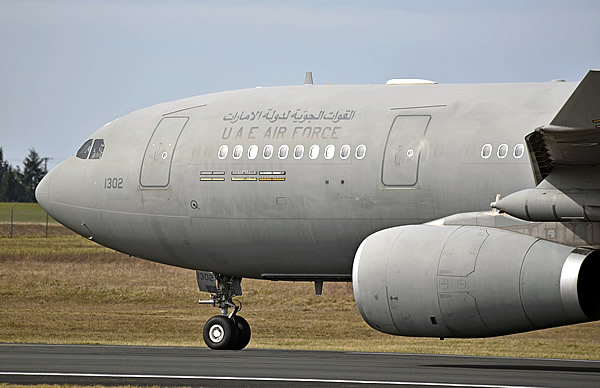 |
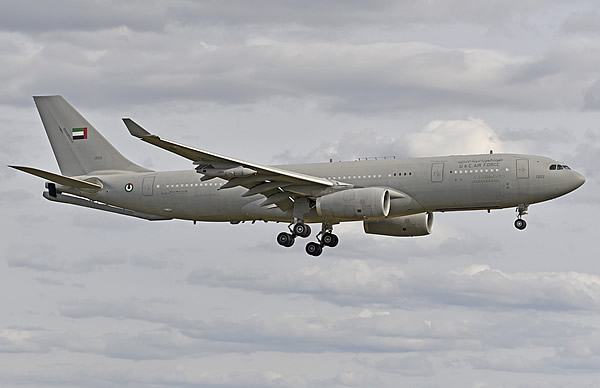 |
Future A330 MRTT, MSN 1857, for Singapore Air Force, Registration EC-335, arriving for anti-corrosion paint in 2018 (Photo by DELEHELLE Eric) |
 |
For More Information on the Airbus A330
Visit the official website of Airbus Commercial Aircraft
